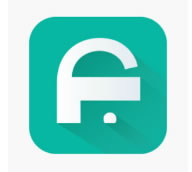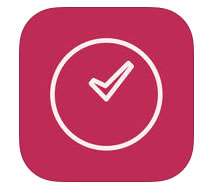First published in the Times Educational Supplement (TESPro Magazine) in 2012.
Strip out all the ‘magic’ systems, reward catalogues, funky behaviour data tracking software and general frippery that now seems to accompany behaviour in many schools and you are left with what really matters – real conversations with angry young people at the point of crisis. It is these moments that lie at the heart of good behaviour and relationship management. It is these moments that are the difference between calm and chaos, confrontation and compliance, inclusion or exclusion. When students dig their heels in and tell you with passion that ‘it’s shit, I won’t do it and you can’t make me’, it is not just your behaviour management skills that are being tested. It is your values, your emotional resilience and your humanity that is under the microscope. Interrupt and disrupt thought patterns quickly and efficiently you become expert at diffusing behaviour bombs that others allow to explode.
The longer each negotiation around behaviour takes for the few, the less time you can give to the many. Students who behave badly in class will inevitably need more of your time outside of lessons. Don’t give it to them in class too.
Limit your formal one-to-one interventions for poor behaviour in class to 30 seconds each time. Get in, deliver the message, ‘anchor’ their behaviour with an example of the student’s previous good behaviour and get out. With your dignity intact and the student’s dignity intact. That is the ‘win, win’. The 30 second intervention demands careful often scripted language. The idea is simple. The performance takes practice. The 30 second intervention is not designed to force the student to play ‘good puppy’, beg for forgiveness and turn their life around before break time. It is carefully planned, utterly predictable and safe way to send a clear messages to the learner. ‘You own your behaviour, your poor behaviour does not deserve my time, you are better than the behaviour you are showing today (and I can prove it!).
The moment you deliver a sanction is the moment that confrontation/complaint/protest will emerge. Counter this defensive response in your 30 second intervention by immediately reminding the student of a previous example of their personal discipline, ‘Do you remember yesterday/last week when you: helped me tidy up/led the group/gave me that excellent homework? Remember Mum’s face when she got the note? That is the person I know, that is the Chelsea I need to see today’. Then use ‘Thank you for listening’ as an excuse to move away and leave the student to their choice. Walk away. Don’t be tempted to ‘loom’ over the student waiting for them to decide what to do. Walk away. Don’t turn back. Even if you have just perfectly performed the 30 second intervention the student may need time to make a choice, time to get back to work and yes time for other learners to turn their attention away.
As you walk away Chelsea will be busy baiting a hook to fish you back. Her bait box box is full of tasty teacher triggers, a loud sweary mutter, perhaps the classic ‘finger’ or the utterly disrespectful teeth kissing coupled with quietly insulting murmurs. Don’t be tempted to take the bait. Keep walking. The rest of the class will realise that you didn’t let it go soon enough. If you rush back in to confront the secondary behaviours you pass over control to the child. You have lost. A full blown confrontation is the ultimate reward for the learner who likes to provoke. All your hard work is soon undone as the emotion accelerates to sweary door slamming report writing segregation cell nastiness.
Of course as you walk away your first job is to write down, discreetly, what just happened so that you can you can speak to the student when everyone is calm. You might prefer to wait until the cold light of the morning to share the note you made with the student. In my experience a blurry faced teenager gives apology and shows regret with more ease. Fully awake and fuelled with sugar/caffeine/stimulant of choice can be trickier beasts. In time the certainty of your ‘follow up’ soon ripples through the rest of the class “He’ll get you, he won’t do anything now, but he’ll get you”. A pointy finger, looming presence or sarcastic tone will undermine the technique. Everything about your physical and tonal approach must scream “I HAVEN’T COME HERE FOR AN ARGUMENT!” Pull up a chair or get on your knees. Take away every nuance of anger, every drop of anger fuel that some young people crave. Strip out the negative reinforces and leave the student feeling that they can have control of their behaviour themselves.
With a 30 second intervention you no longer need to improvise. The script is set, the pace predetermined and the arc of the intervention fine tuned. The brevity of the intervention affords no time for the gradual crescendo of the improvised castigation. Neither is driven by big sticks and heavy punishment. It leaves the student thinking about their actions, knowing that someone important believes they are better. At the pivotal point of behaviour management you can address difficult behaviour while leaving your relationship perfectly in tact.
Performing the 30 second intervention well is truly skilful behaviour and emotion management. It takes a great deal of self control to stop your emotion creeping out. Reminding students of their good behaviour in the middle of dealing with their poor behaviour takes practice. Matching humility and certainty takes some emotional resilience on your part. Yet when everyone sees that poor behaviour is no longer rewarded, that interventions are quick, efficient and predictable the classroom becomes safer and less explosive place to learn.








